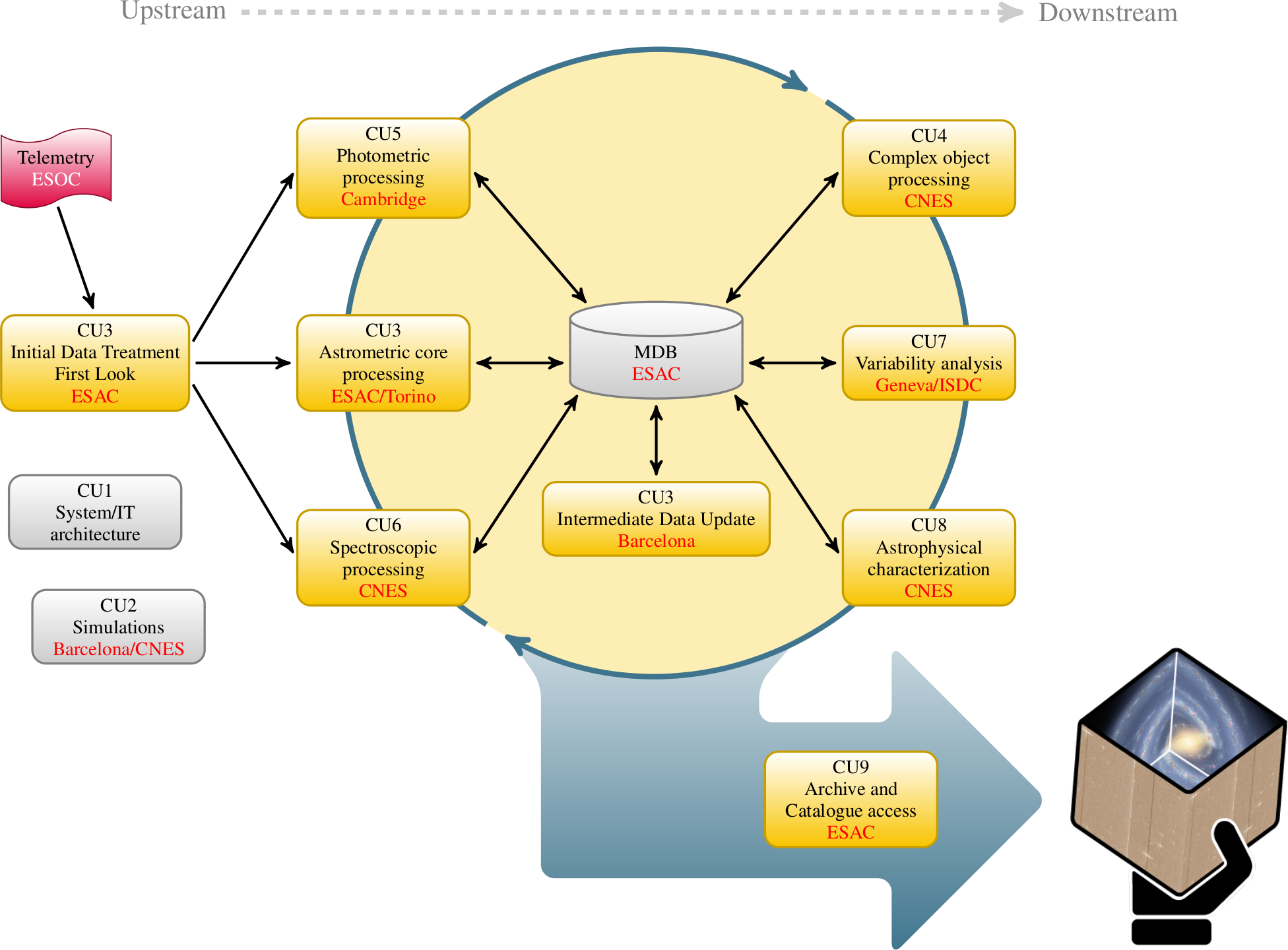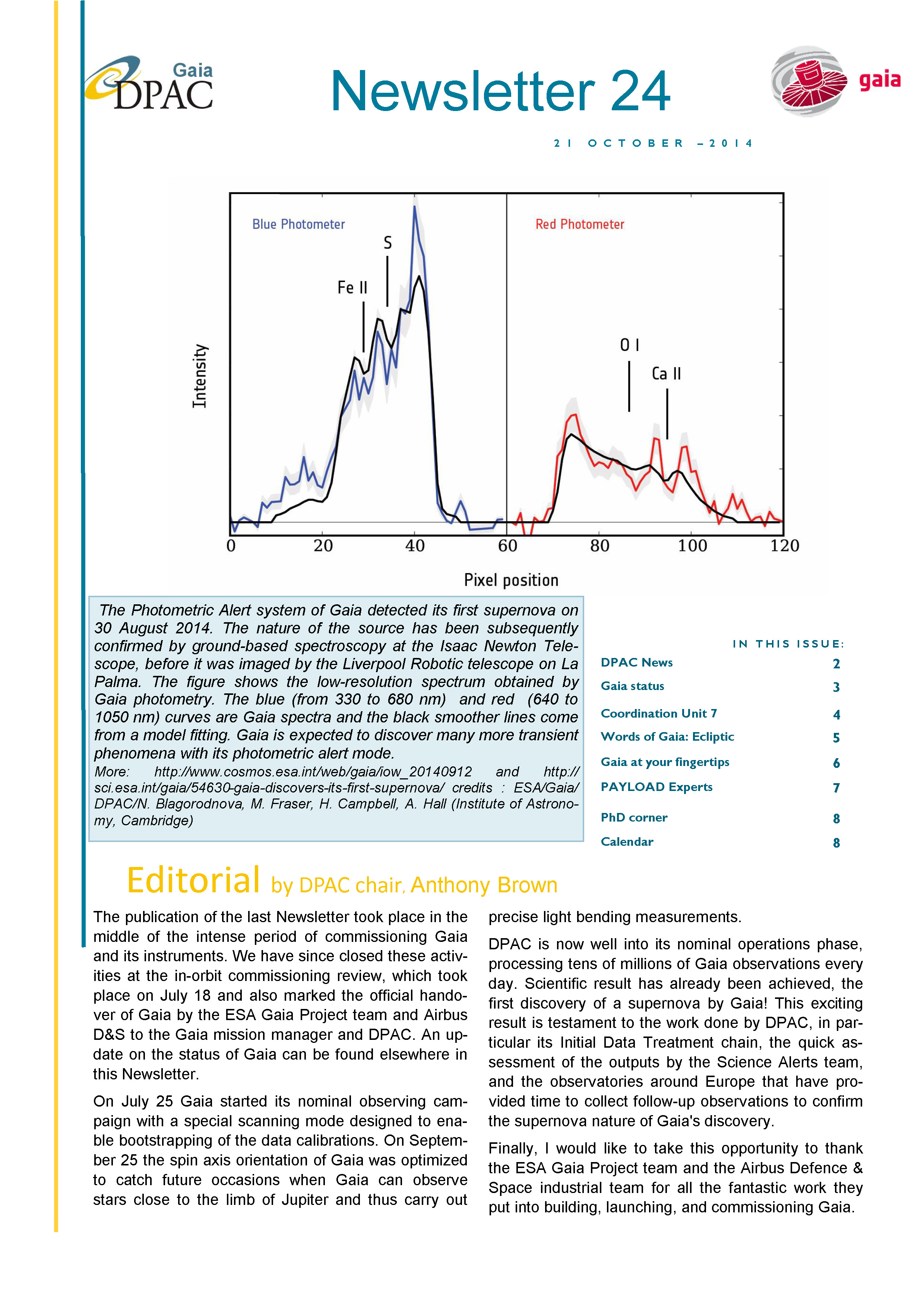Data Processing - Gaia
Data Processing
The nature of the Gaia mission leads to the acquisition of an enormous quantity of complex, extremely precise data, representing the multiple observations of a billion diverse objects by a double vision instrument that is spinning and precessing. The Gaia data challenge - processing raw satellite telemetry into valuable science products - is therefore a huge task in terms of expertise, effort and dedicated computing power.
A large pan-European team of expert scientists and software developers known as DPAC (Data Processing and Analysis Consortium) is responsible for the processing of Gaia‘s data with the final objective of producing the Gaia Catalogue. Drawing its membership from over 20 countries (see map), the consortium brings together skills and expertise from accross the continent, reflecting the international nature and cooperative spirit of ESA itself.
Coordinated by the DPAC Executive, the consortium is sub-divided into nine smaller, specialist units known as Coordination Units, or CUs, with each unit being assigned a unique set of data processing tasks. The CUs draw their membership from multiple countries and are supported by the six Data Processing Centres, or DPCs (red dots on map). These are the centres at which the actual computer hardware for processing is available. The day-to-day management of the overall DPAC development and operations is delegated to the DPAC Project Office (PO). The schematic below shows the flow of data within DPAC and the roles of the various CUs and DPCs (locations of the latter in red).
- Removed a total of (27) style text-align:center;
- Removed a total of (2) align=middle;
- Removed a total of (1) border attribute.
- Removed a total of (1) cellpadding attribute.
- Removed a total of (1) cellspacing attribute.








































 Sign in
Sign in
 Science & Technology
Science & Technology




